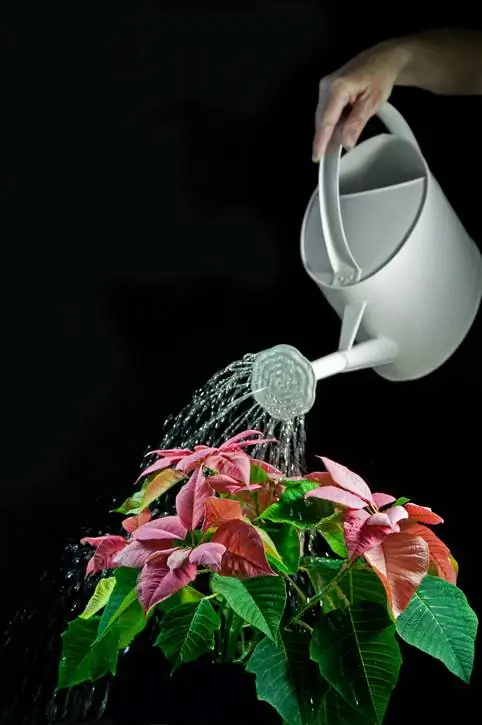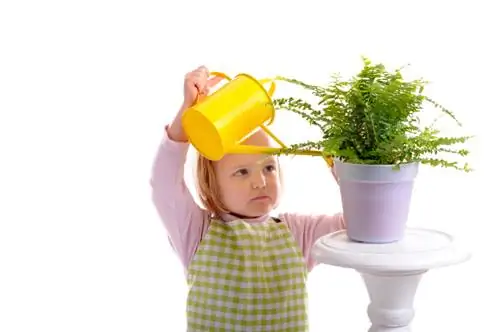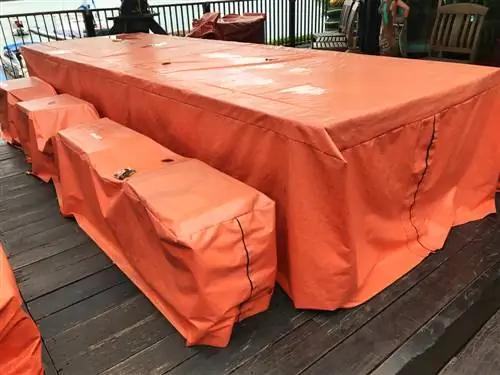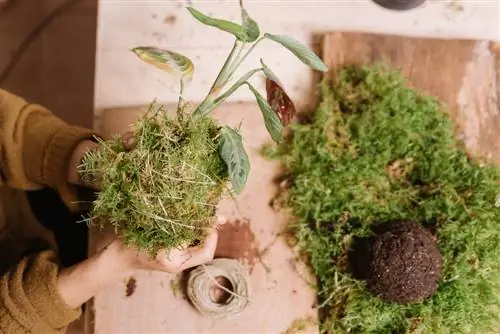- Author admin [email protected].
- Public 2023-12-16 16:46.
- Last modified 2025-01-23 11:20.
The vast majority of poinsettias in this country only have a short lifespan. They soon lose their leaves and no longer look particularly decorative. In many cases, this is due to incorrect care, especially incorrect watering. Tips on how to properly water a poinsettia.

How do I water a poinsettia correctly?
To properly water a poinsettia, the soil should be kept dry rather than moist and only watered when it has completely dried out. Excess irrigation water in the saucer must be removed immediately to avoid waterlogging and root rot.
Water a poinsettia properly
The poinsettia is native to regions where it rarely but often rains heavily. It can neither tolerate too much moisture nor allow the root ball to dry out completely. Unfortunately, most plant lovers do too much of a good thing and water too often and too much water.
Water the poinsettia correctly if you keep it dry rather than moist. After watering, allow the soil to dry for a long time. Do the finger test by pressing a finger into the substrate to determine whether the soil has already dried out.
Only then will the poinsettia be watered again. Any excess water that collects in the saucer must be poured off immediately. Waterlogging causes root rot.
When the poinsettia sheds its leaves
The poinsettia often loses its leaves after just a few days. He often gets new water because the hobby gardener assumes that the plant is too dry.
The opposite is the case. The inexpensive poinsettias from the supermarket in particular are kept far too moist and lose their leaves after a short time.
Let a poinsettia with substrate that is too moist dry out before giving it new water.
Tip
If you continue to care for the poinsettia on the terrace in summer, do not place the pot in a saucer. Then the rain or irrigation water can drain away and there is no waterlogging.






